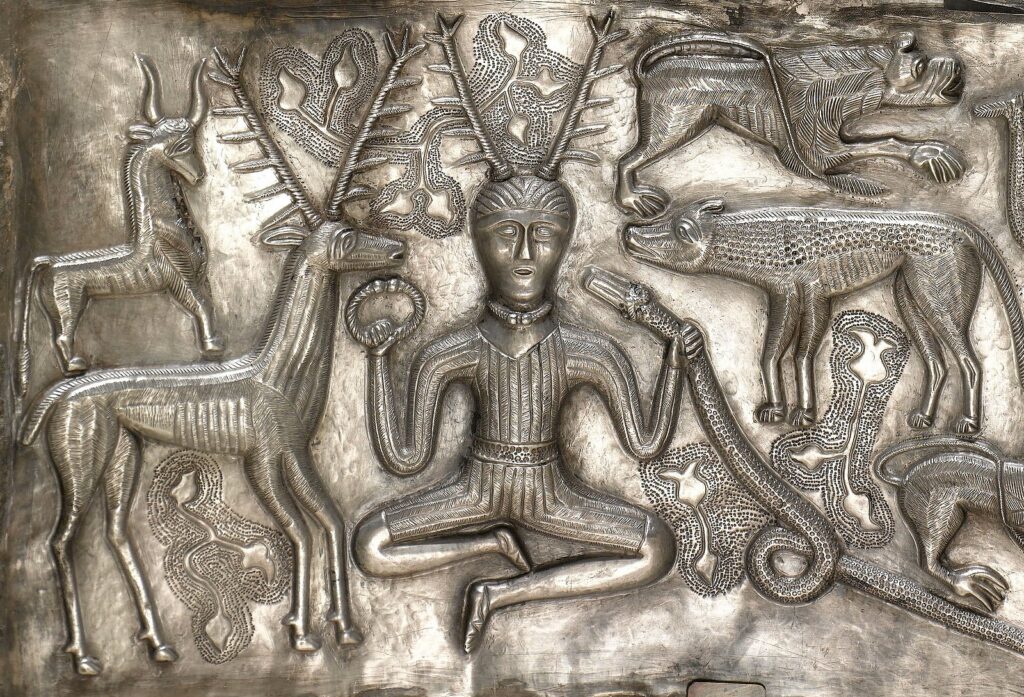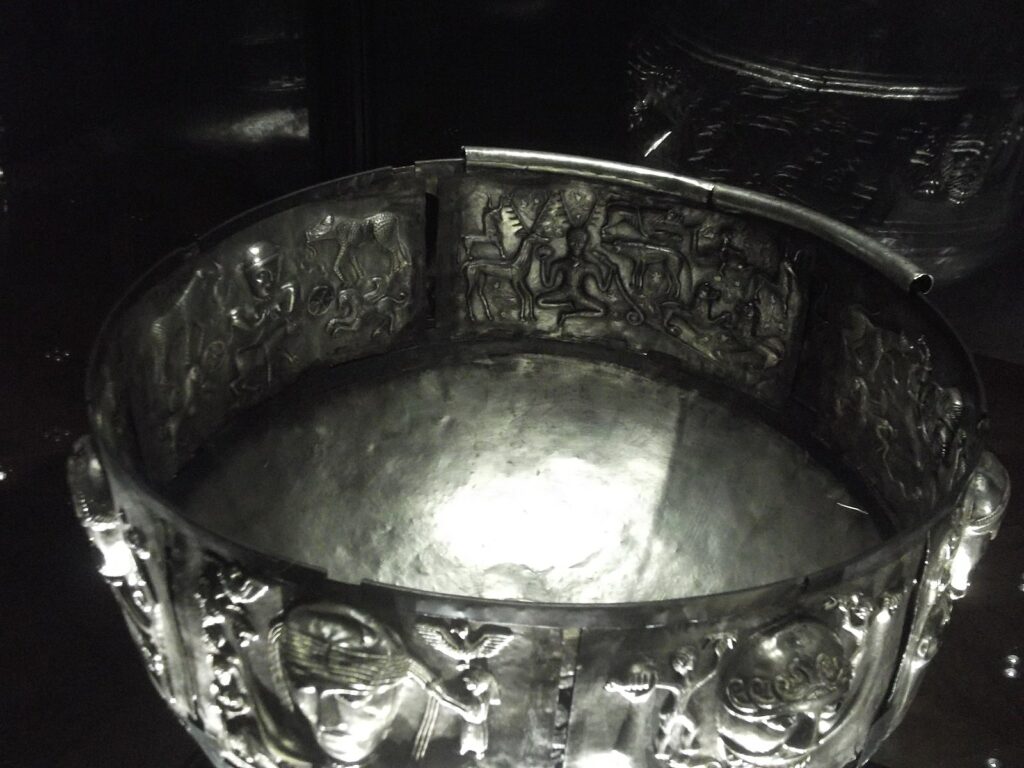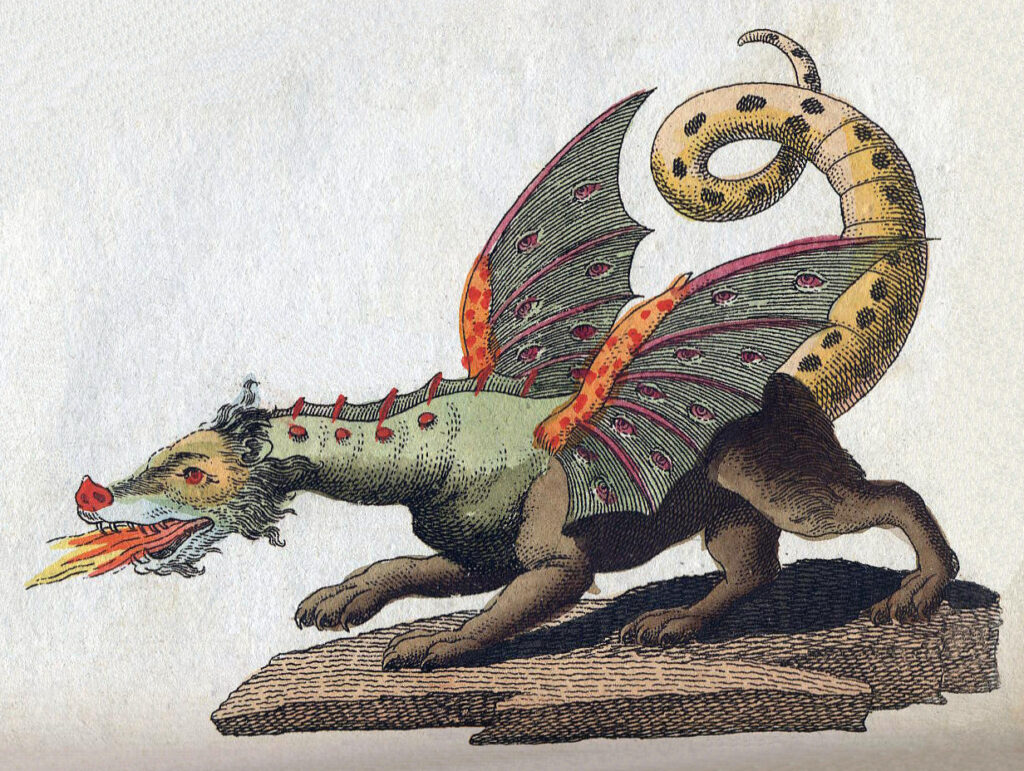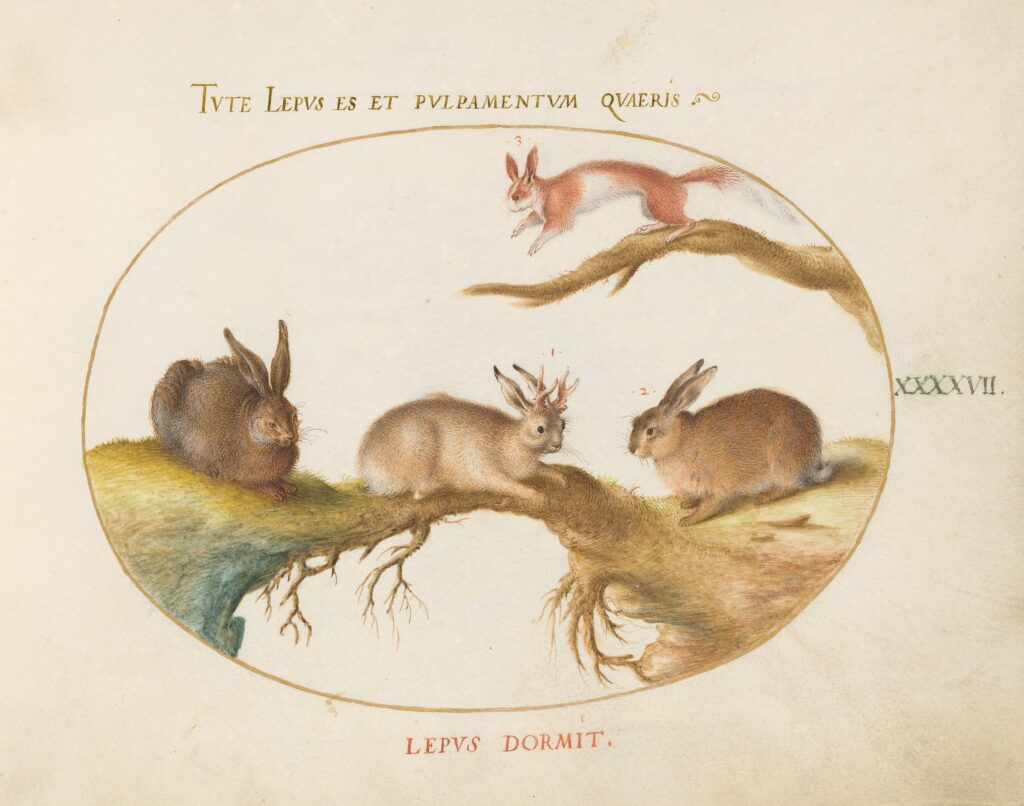Cernunnos, also known as the “Horned One” and “The Lord of the Wilds”, was the god of beasts and wild places in the Celtic world.
He was largely worshiped in Gaul. This area was located in the northwest region of Europe. It covered modern-day France and Belgium, although over time his following expanded to the British Isles as well.
He is often depicted with stag horns and a Celtic torc (a necklace that symbolizes wealth and high social status). His image has made its way into other religions over time. With little to no recorded history of Cernunnos, scholars have pieced together a myriad of attributes that have been assigned to him across many cultures.

Where was Cernunnos from?
Representations of Cernunnos can be found throughout the Gallic world, but there is only one instance of Cernunnos’ name used directly beside the commonly used imagery of him. He was named at the Nautae Parisiaci, or Pillar of the Boat Men, a monument in France.
The monument was found in the foundation of the Notre Dame cathedral in Paris, buried from when the site was the Gallic town of Lutetia. The monument portrays a horned man with torcs hanging from the horns.
Although the bottom half is lost, it is assumed he was sitting cross-legged. This assumption is derived from a similar image found on an artifact called the Gundestrap cauldron. This shows a horned man sitting with his legs crossed, holding a torc, and surrounded by wild animals.
Although the material and craftsmanship indicate that the cauldron is Gallic, there is no inscription specifically stating that the image represents Cernunnos. This led scholars to debate heavily whether the two images actually are related.
The only other representation directly attributed to Cernunnos is the rock drawings at Val Comonica. This drawing depicts Cernunnos as a large and imposing figure in the way the other two do not.
Records of Cernunnos
The monument, cauldron, and rock drawings are believed to be specifically Cernunnos. But there are also hundreds of other images of horned deities across Celtic lands of which scholars are unsure.
This variety of images has led scholars to debate if Cernunnos was an individual deity worshiped by a specific tribe of Gauls, or if Cernunnos is merely an amalgamation of other similar horned gods from different religions.
Nearly every polytheistic pantheon had a god with horns, such as Pan from Greek mythology and Sylvanus from Roman mythology. These gods usually represented nature and life in some way. Their titles are related to the wilds, life cycles, sexuality, or fertility.
Representations of Cernunonos easily could just be a derivative version of one of these gods that simply lacks a caption to specify who it is. However, a lack of written Gallic history and culture means that the true nature and role of Cernunnos is lost to time.
Despite the lack of written mythology, scholars have drawn evidence together from small inscriptions on various artifacts to create some common characteristics.
Who was Cernunnos?
The antlers evident in every image emphasize Cernunnos’ role as the connection between humanity and nature. Along with the fact that he usually is surrounded by other animals such as stags and snakes.
His cross-legged pose on the Gundstrap Cauldron is spiritual in nature, while the torcs that he holds or has on his antlers suggest that Cernunnos was an influential character.

As a man, he may have had wealth or power. As a deity, he may have had the power to offer wealth and social status to his followers.
Other potential attributes for Cernunnos include ruling over death or wealth. However, these attributes are drawn from other gods Cernunnos resembles, such as Plutus in Roman mythology.
Many of these theories are based on very little evidence, and Cernunnos’ role as a neopagan deity has overshadowed the absence of evidence about his pre-Christian nature.
Where is Cernunnos today?
Today, Cernunnos is largely known by the attributes that have been introduced into his character in the past two centuries, rather than any characteristic that has persisted from his pre-Christian form.
As Christianity made its way to Britain during the first millennium, the monotheistic religion was at odds with paganism and other polytheistic beliefs. In order to solidify religious control of the region, Christian imagery began demonizing polytheistic gods, such as Cernunnos.
The common image of Satan, the fallen angel that tempts humanity, has become a humanoid goat with protruding horns. This is a direct result of the church attempting to discourage paganism by associating a polytheistic god with the embodiment of evil in the Christian faith.
Similarly, in 1917 Margaret Murray’s The God of the Witches framed Cernunnos as the driving force behind anti-Christian practice. It claimed he was the main deity for witches. It also said that he was responsible for anti-Christian sentiments throughout Europe.
Although some of Murray’s claims were exaggerated, Cernunnos has been adopted into witch-adjacent religions like Wicca and Neopaganism in a similar role as his original form. He continues to be depicted as a horned god representing wilderness and the natural life cycle. These characteristics are now commonly associated with his entire history.
Although his likeness is recognizable in many other deities and symbology, almost nothing is known of Cernunnos in the Celtic world. He is an enigma and perhaps was not even his own entity, but rather an amalgamation of assorted other gods.
Regardless of how the Gauls considered him, he has a noticeable modern-day influence, through the imagery of Satan and his role in the Neopagan pantheon. With further archeological digs, perhaps scholars will someday discover more that can confirm or contradict the existing beliefs about the mysterious Lord of the Wilds.
References
“Cernunnos Celtic Deity.” Britannica, September 21, 2023. https://www.britannica.com/topic/Cernunnos.
Greenberg, Mike. “Who Was The God Cernunnos?” Mythology Source, January 18, 2021. https://mythologysource.com/cernunnos-celtic-god/.
Tolentino, Cierra. “Cernunnos: Lord of the Wild Things.” History Cooperative, January 31, 2023. https://historycooperative.org/cernunnos/.
Wright, Gregory. “CELTIC GOD Cernunnos.” Mythopedia, November 29, 2022. https://mythopedia.com/topics/cernunnos.

